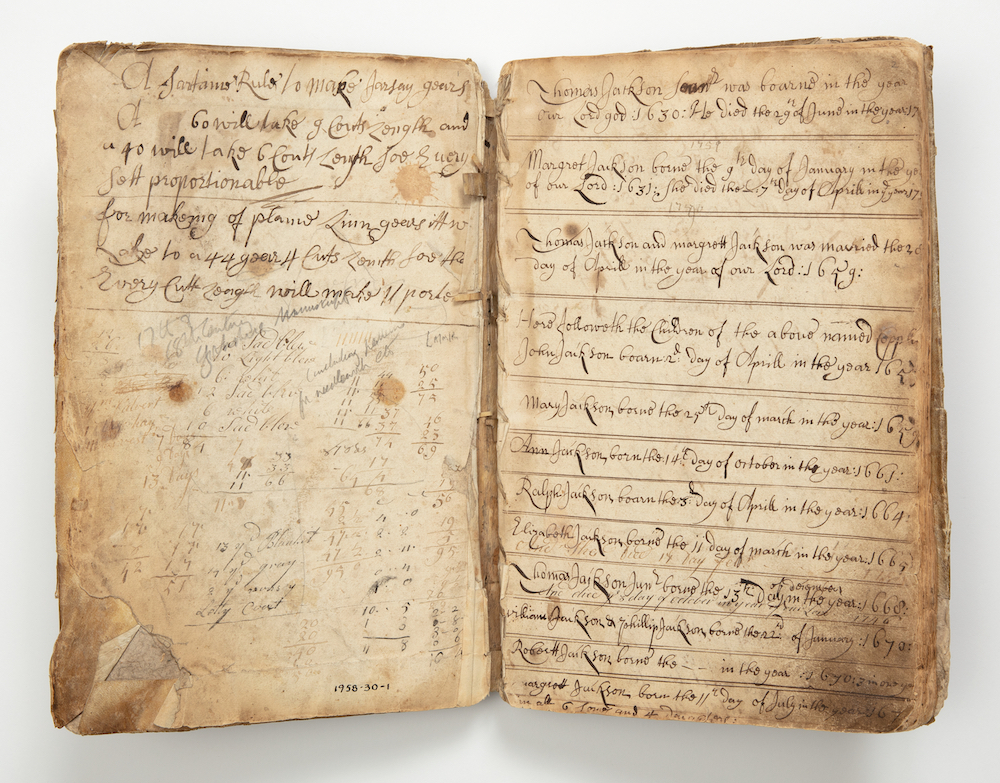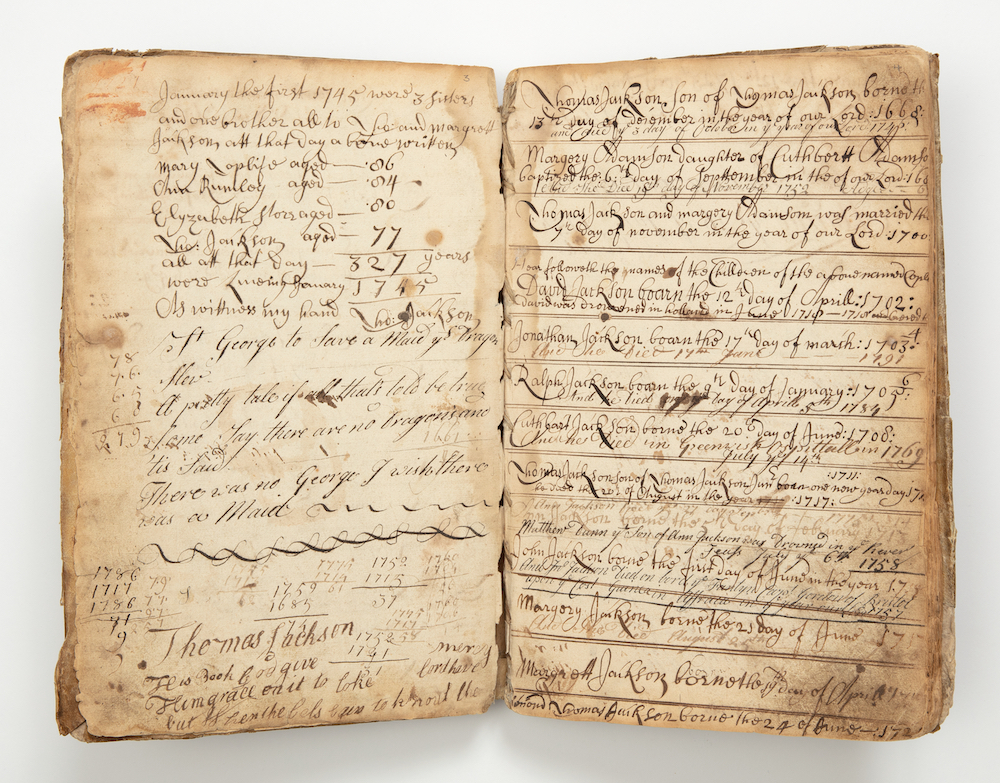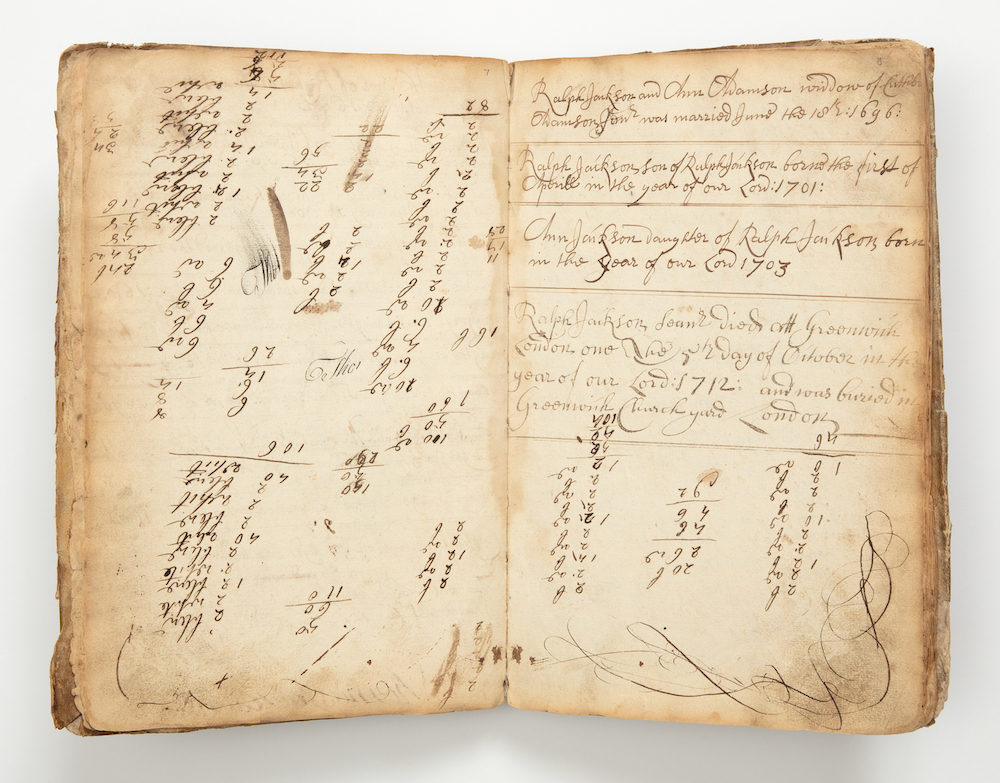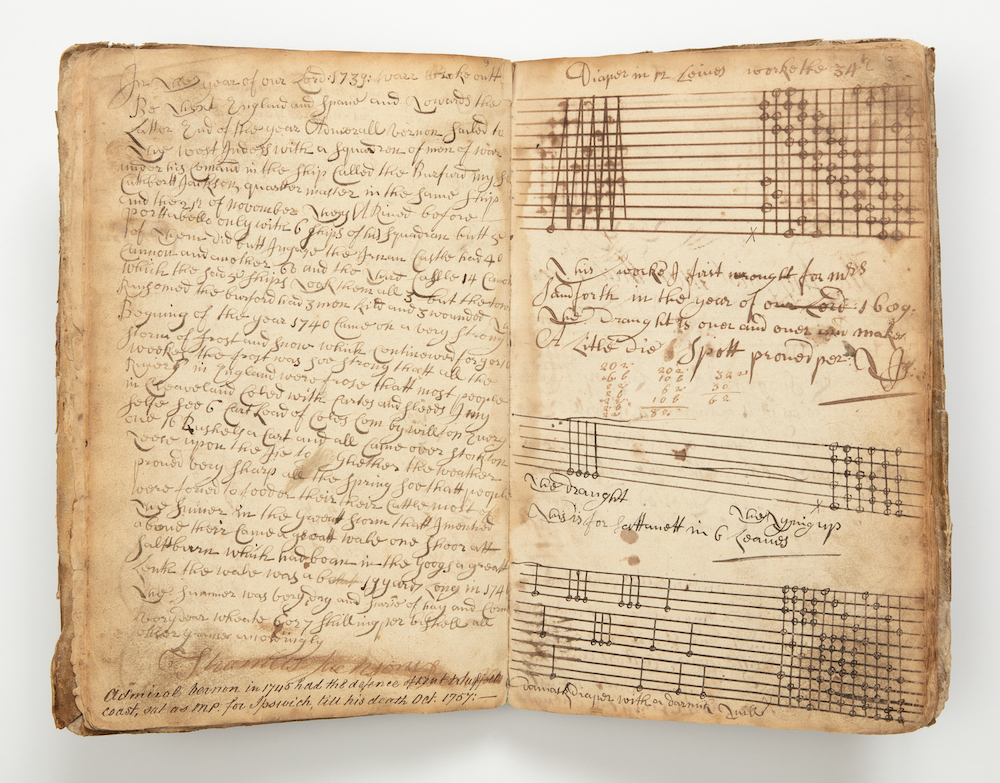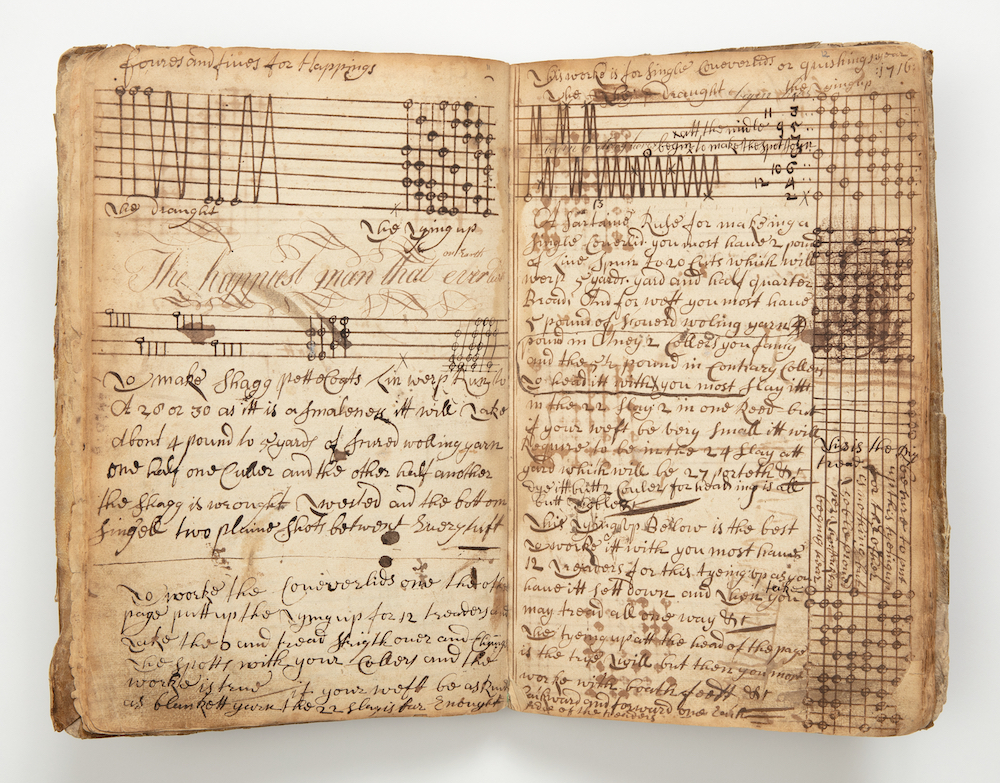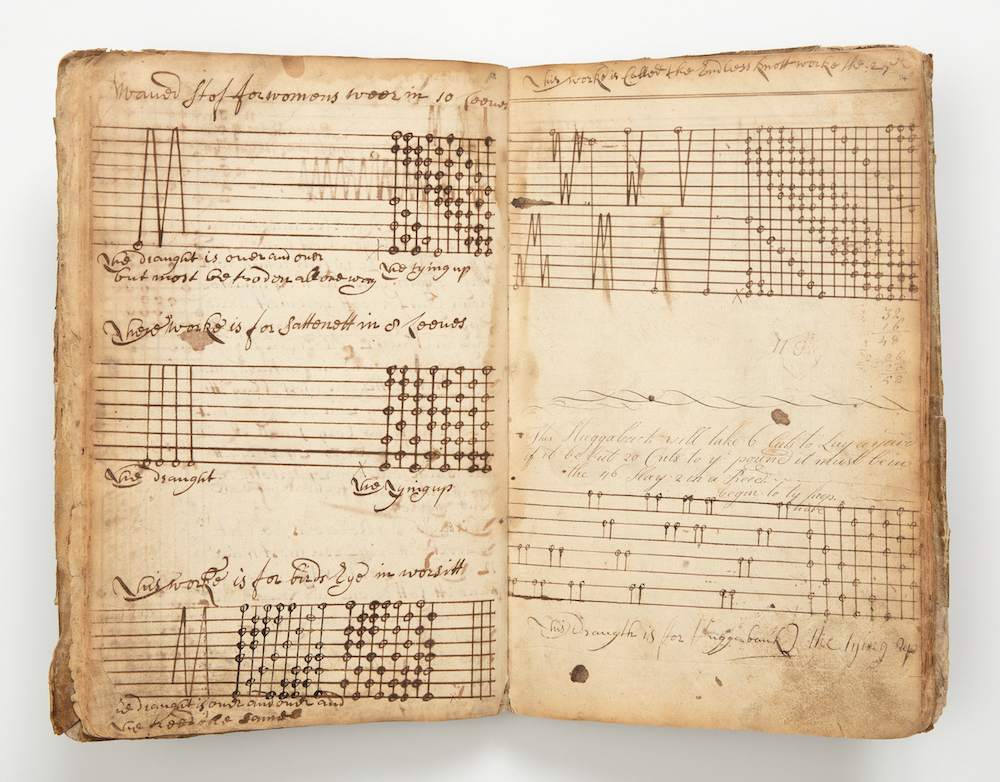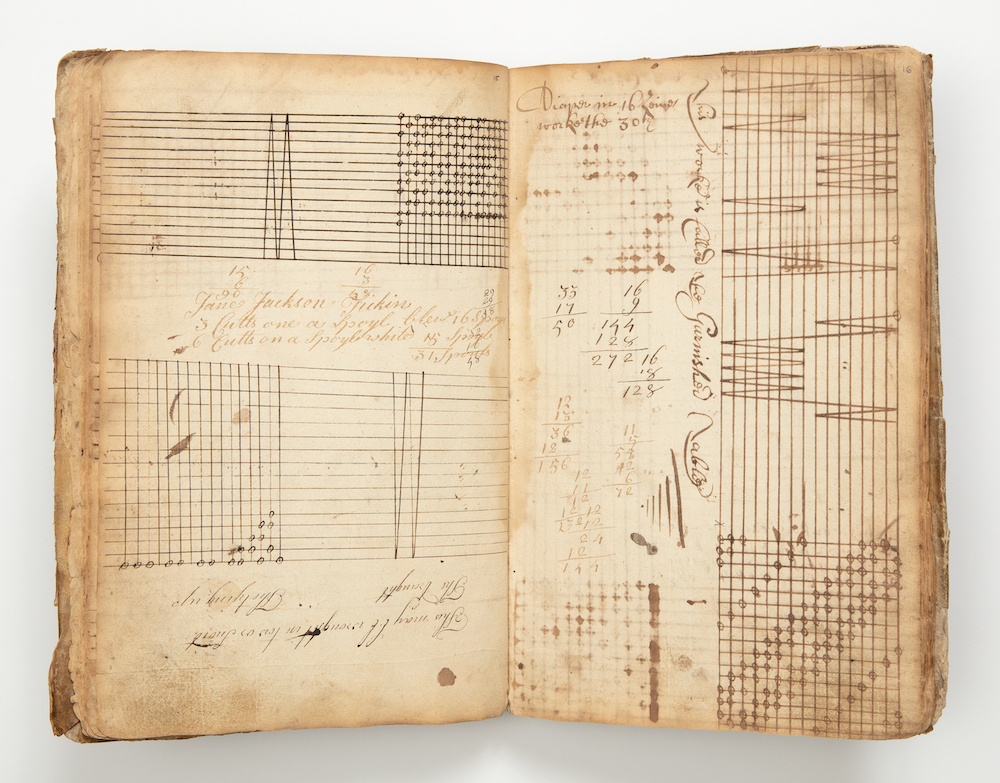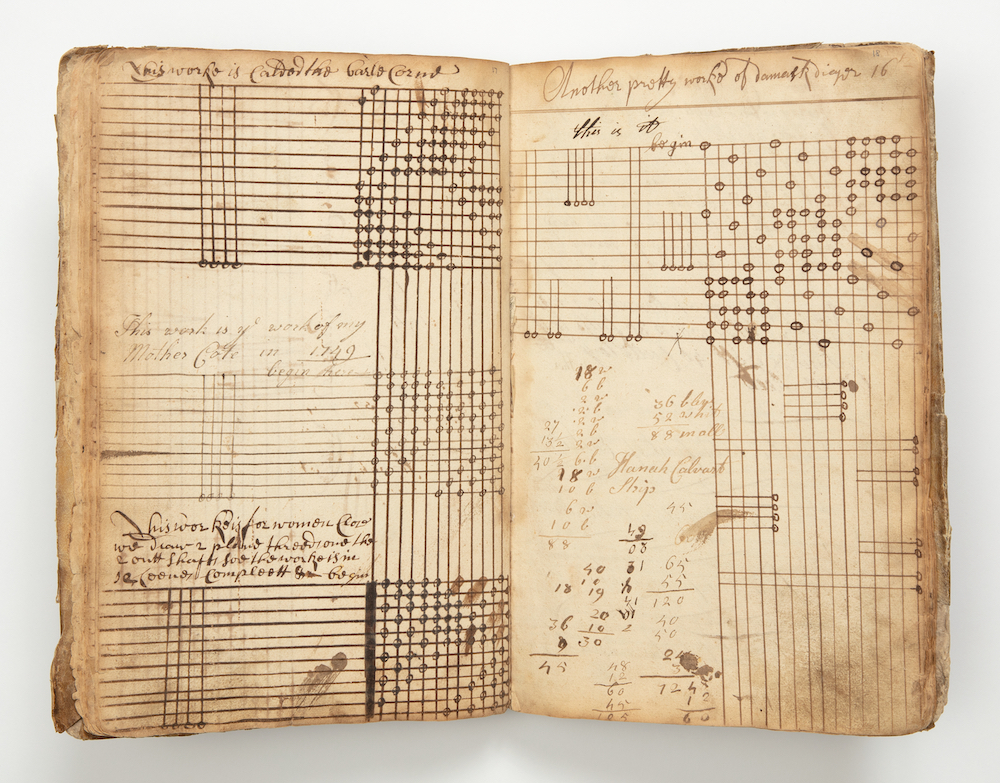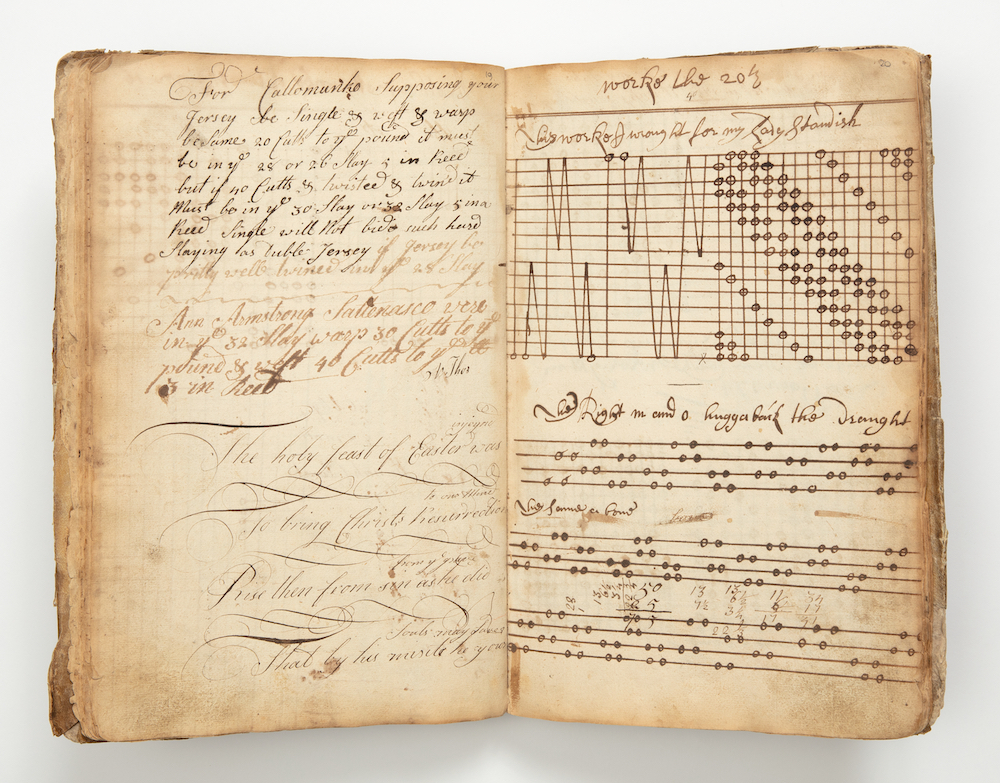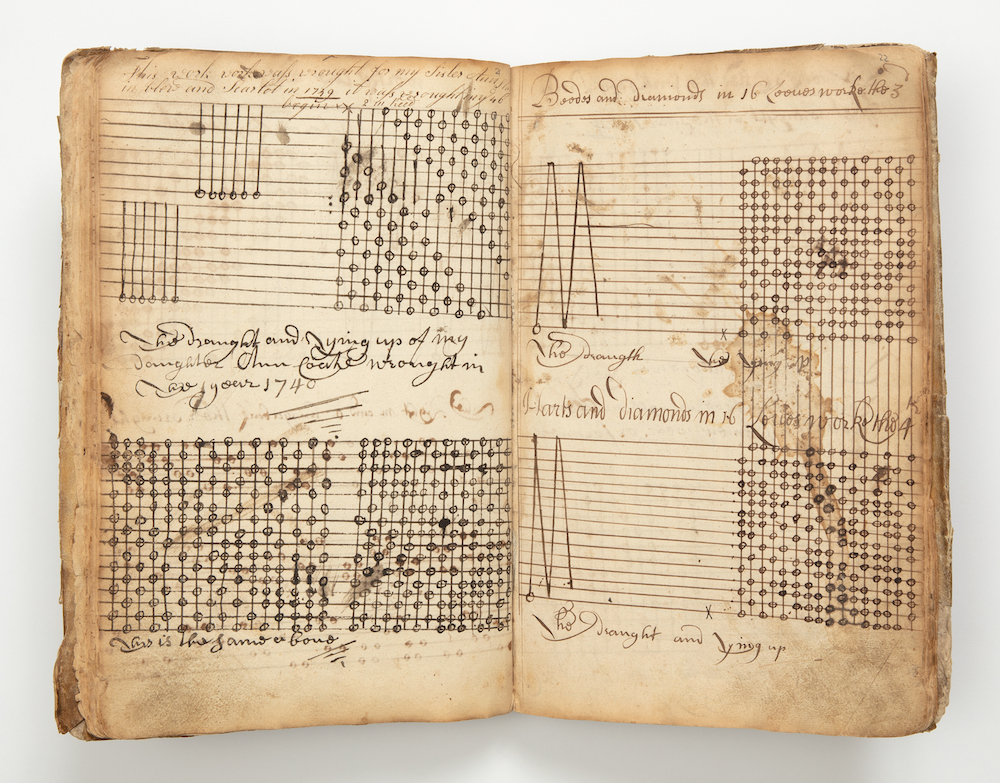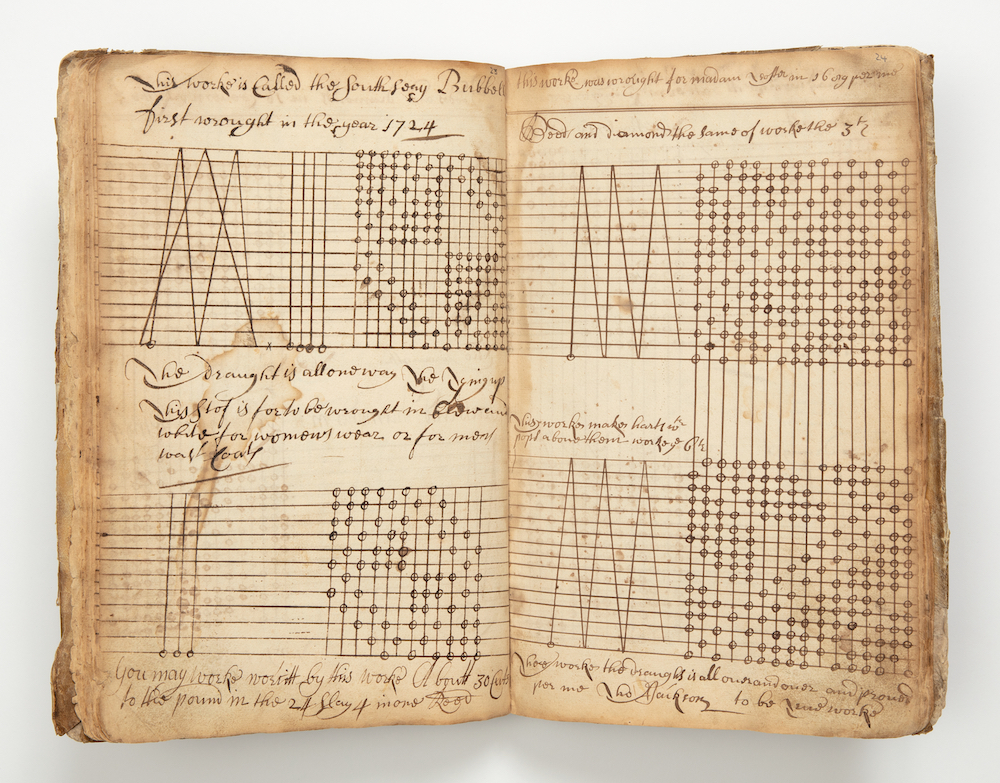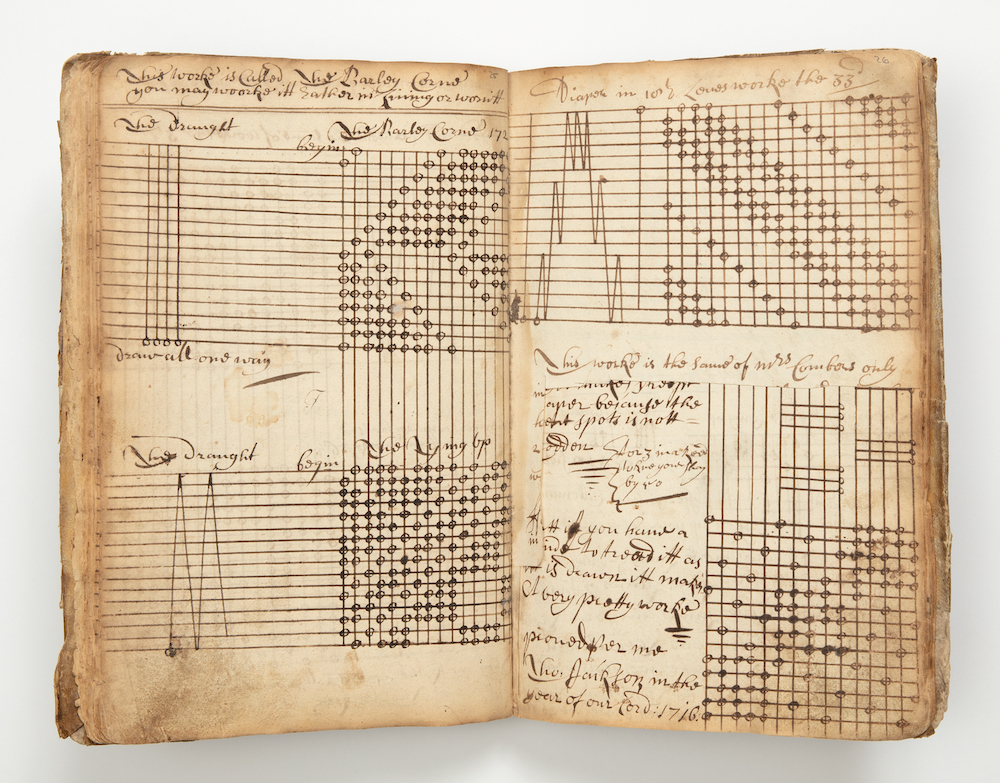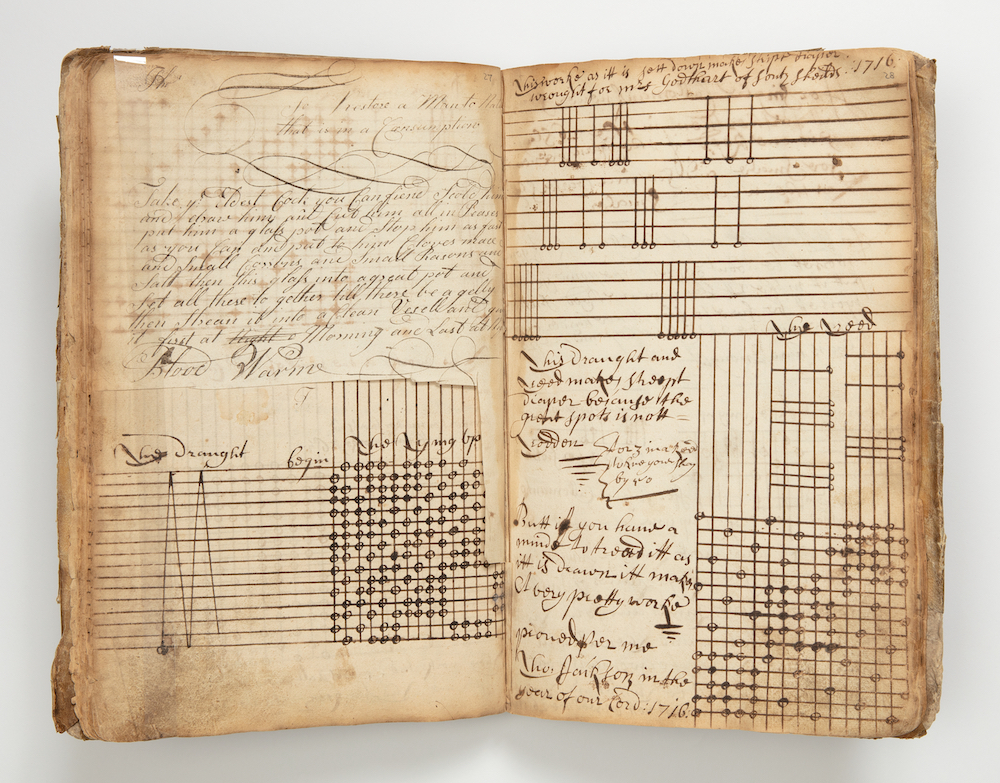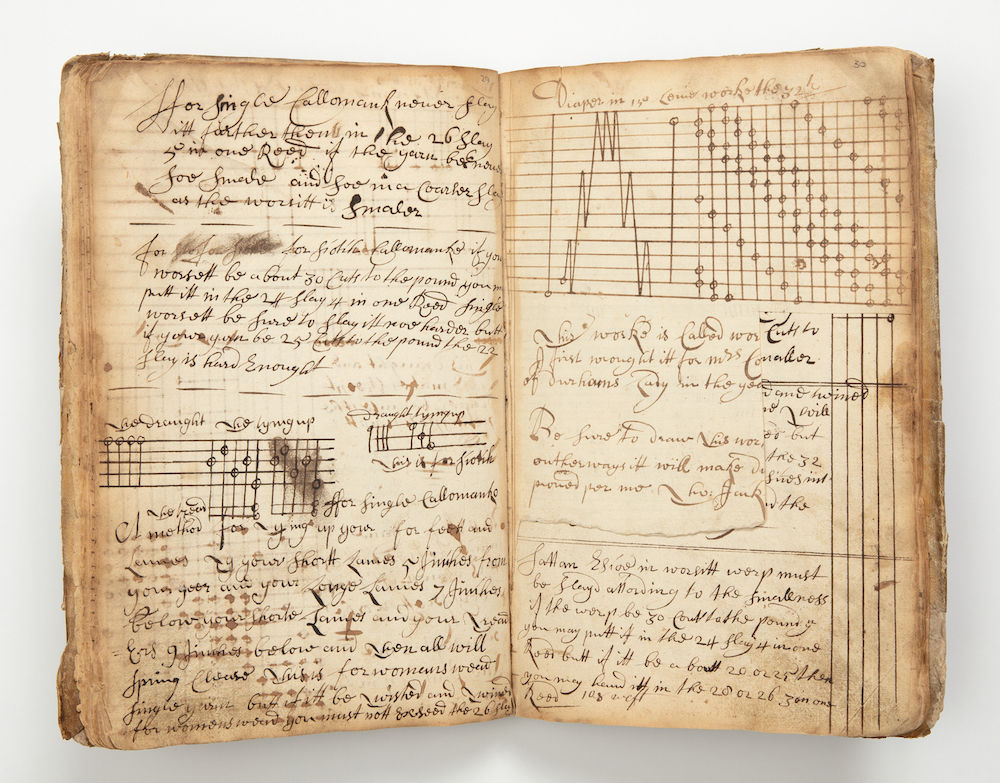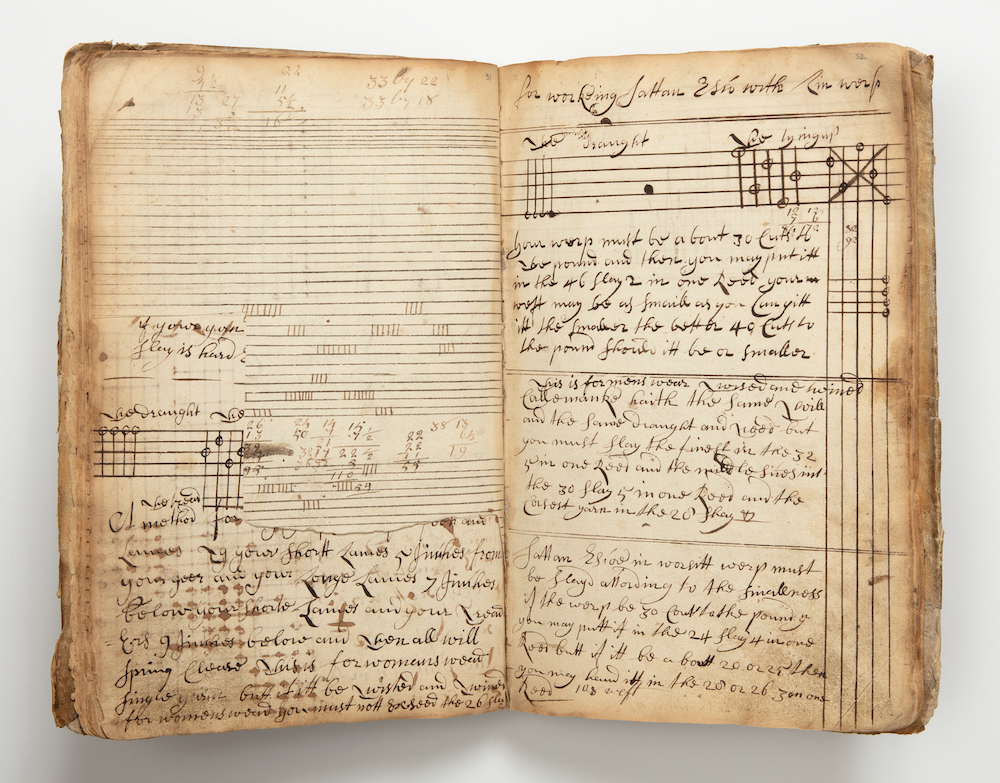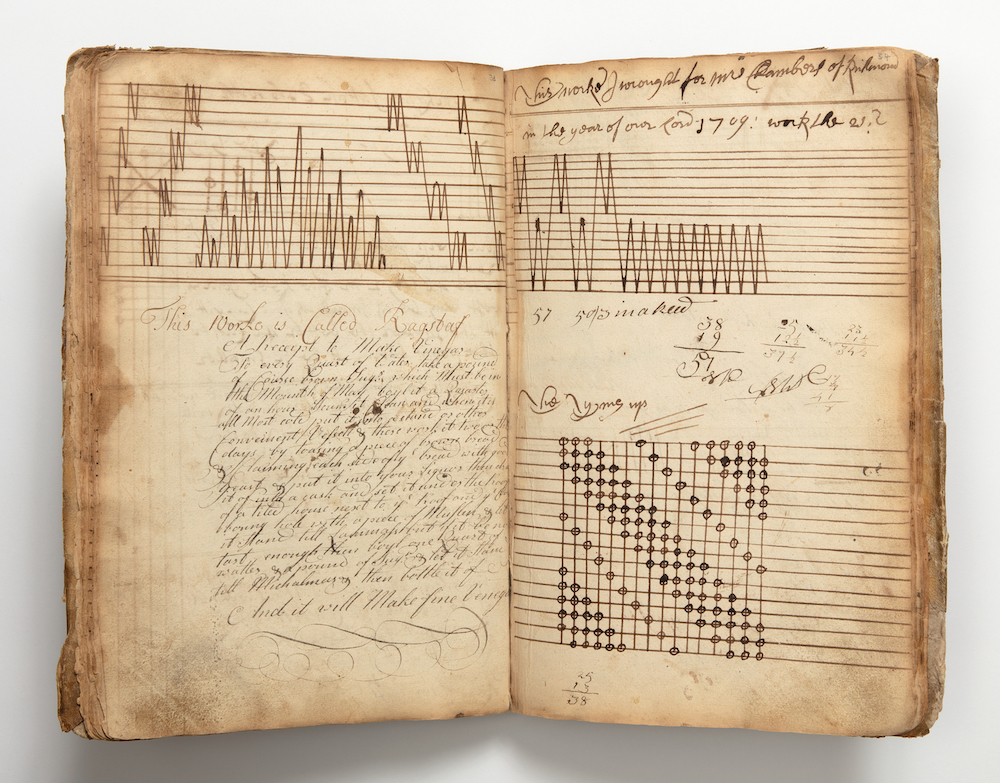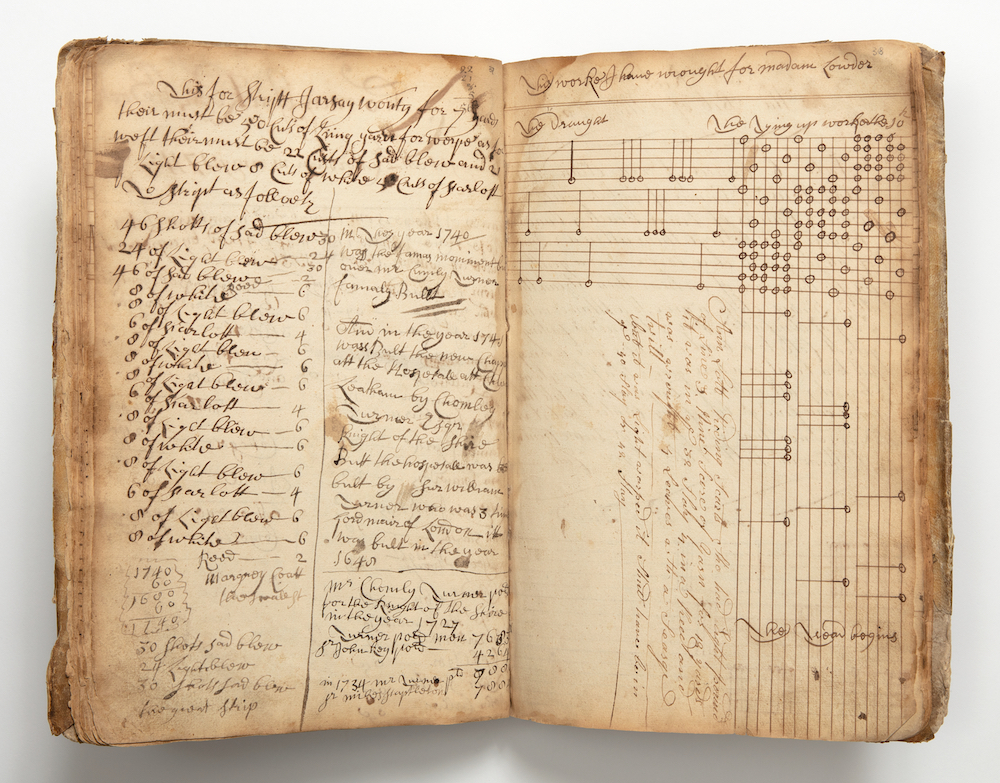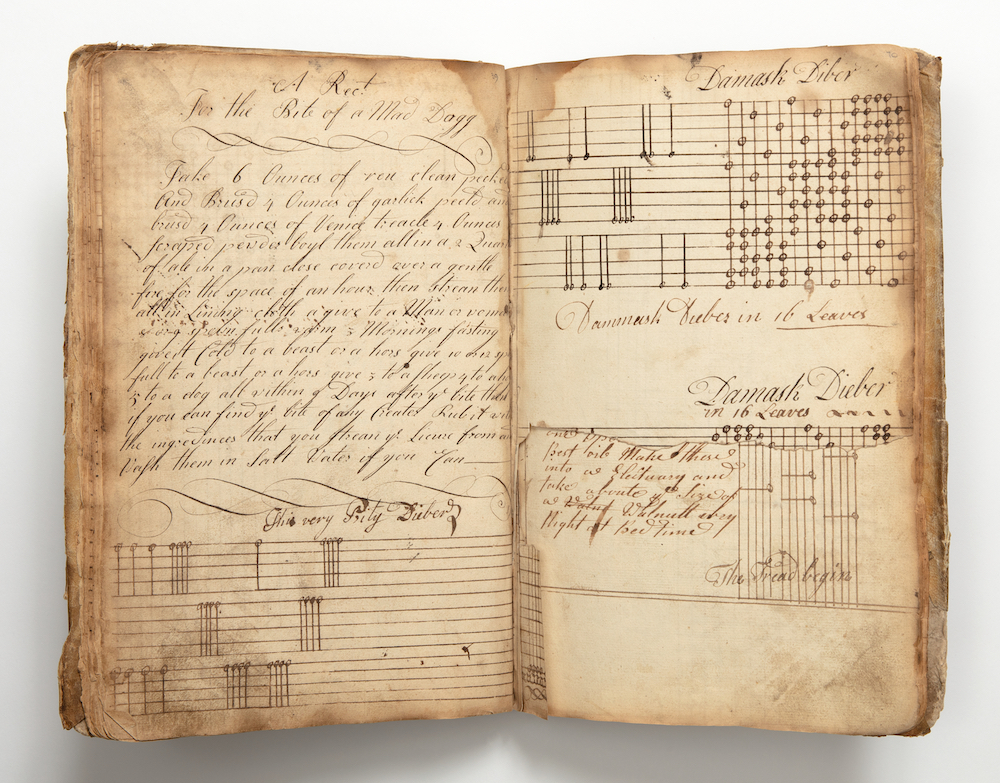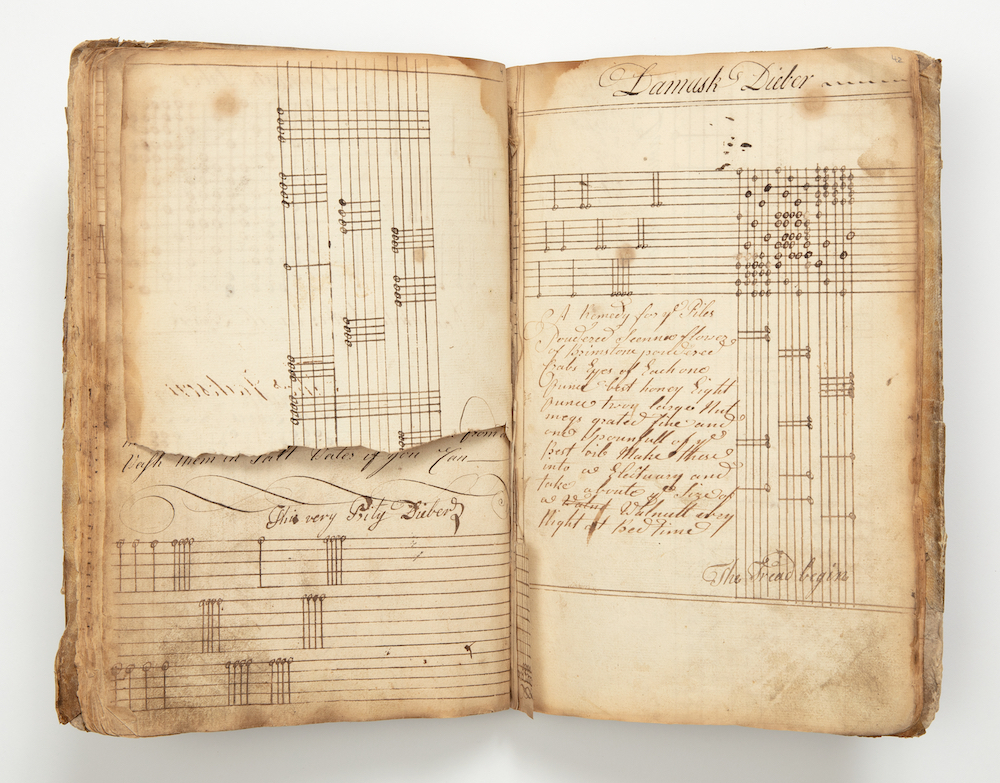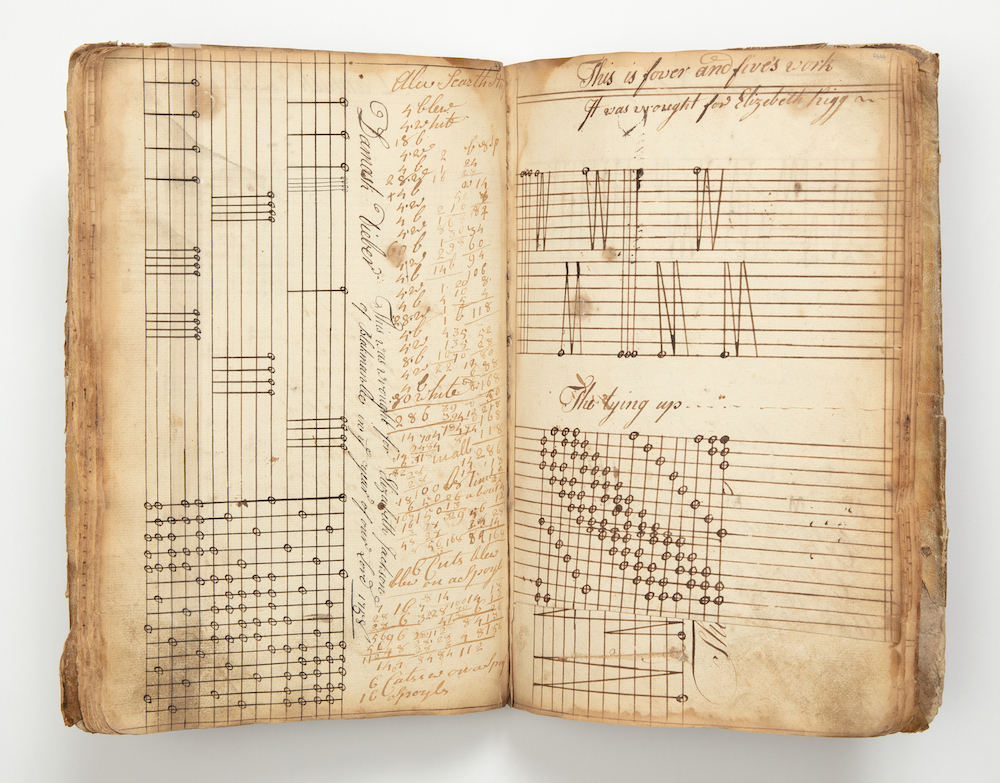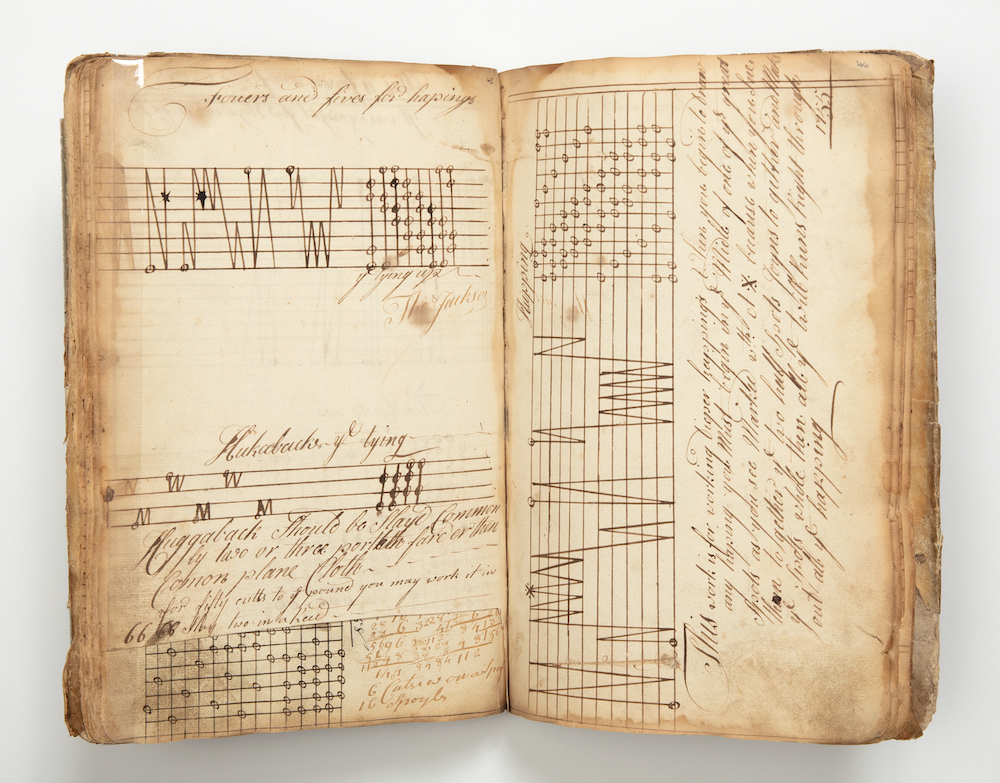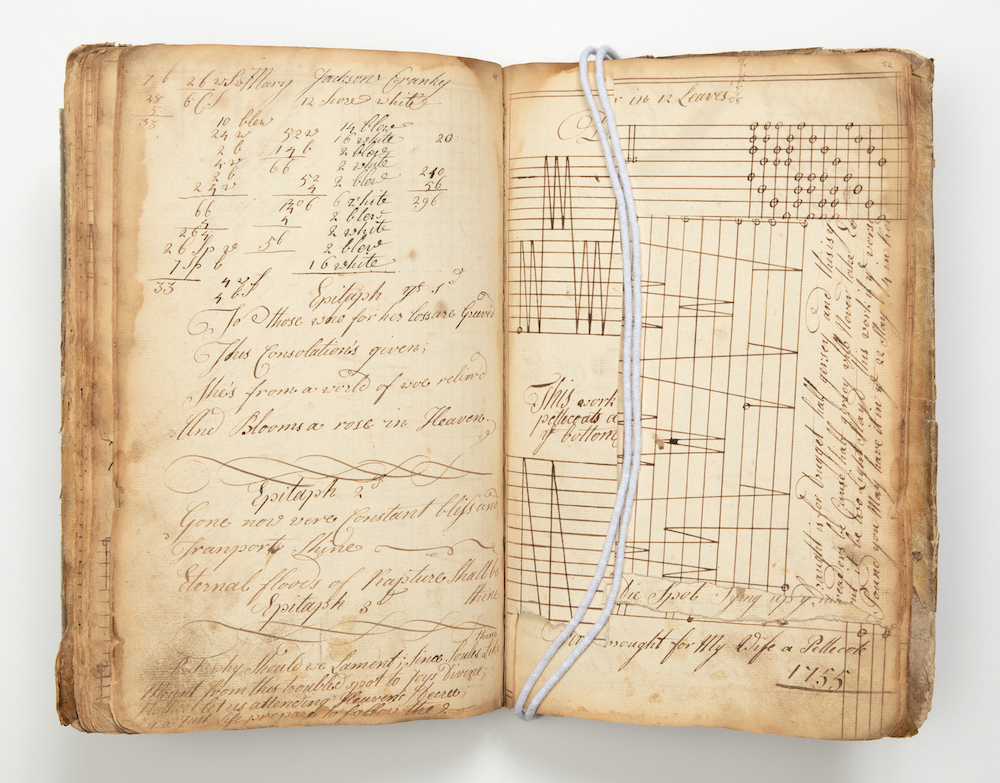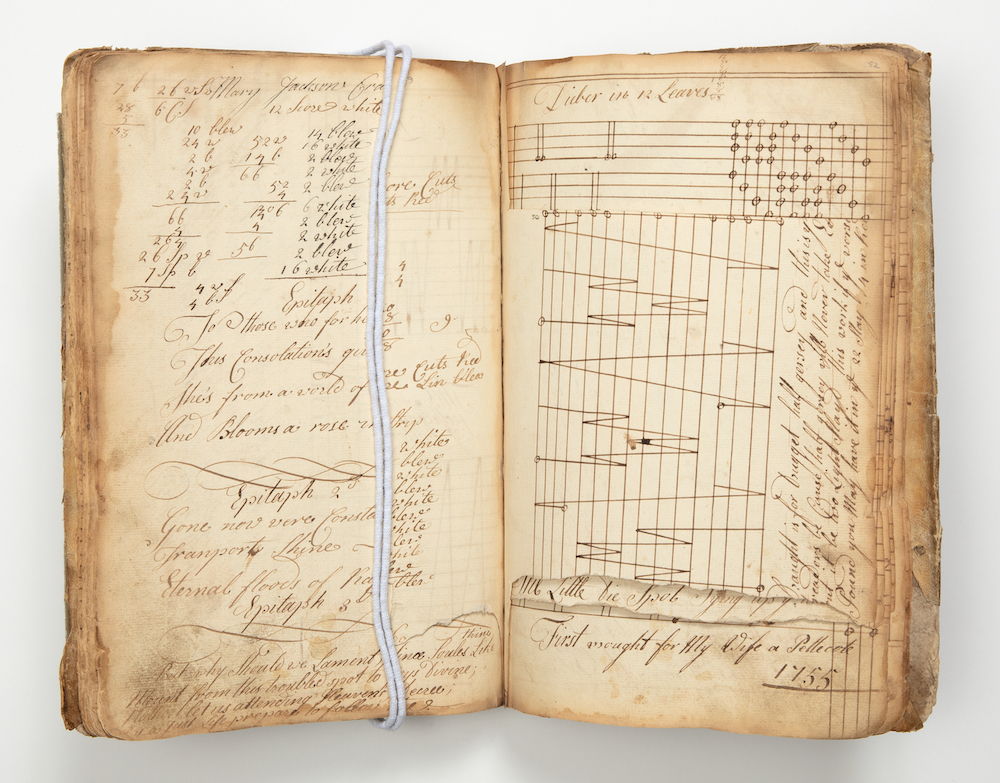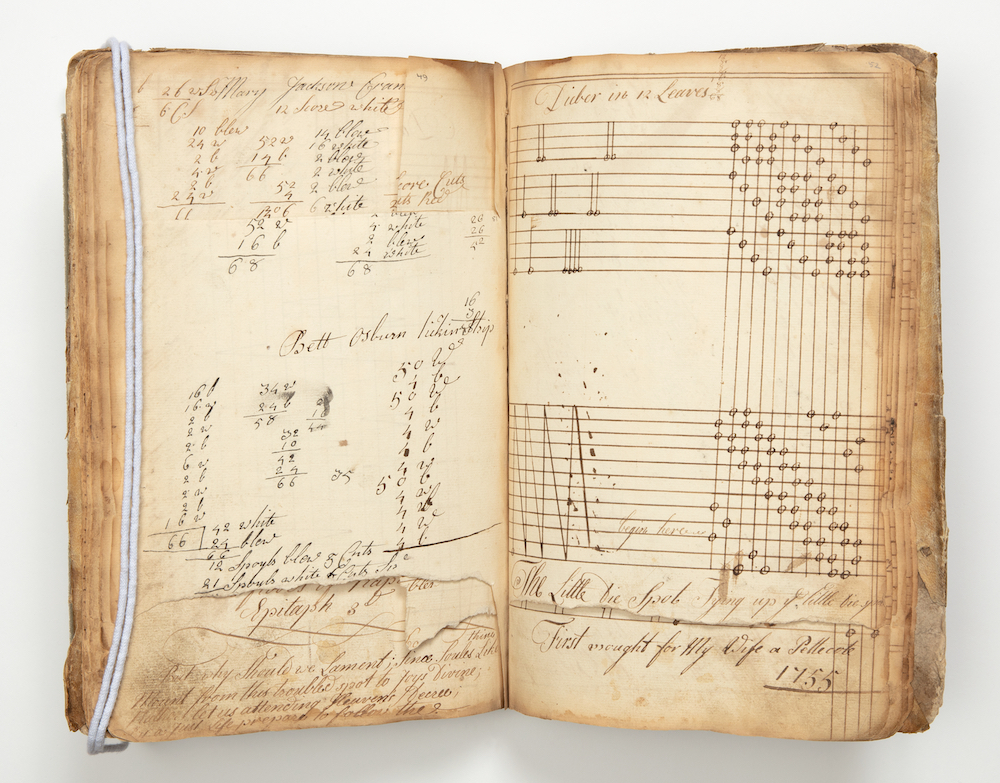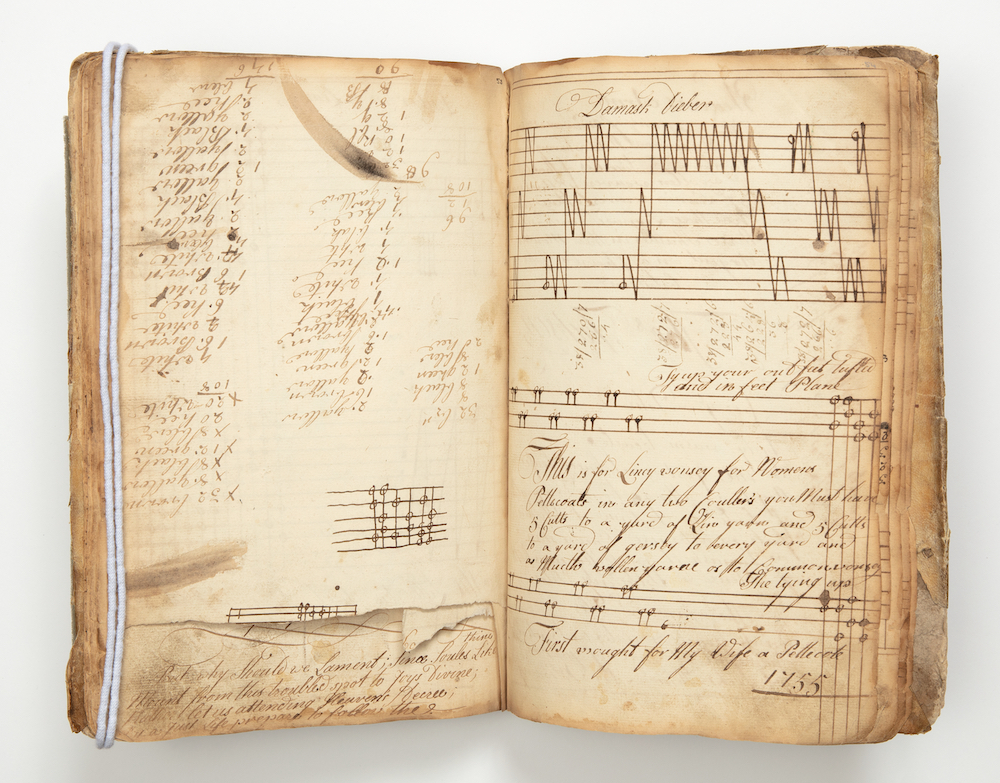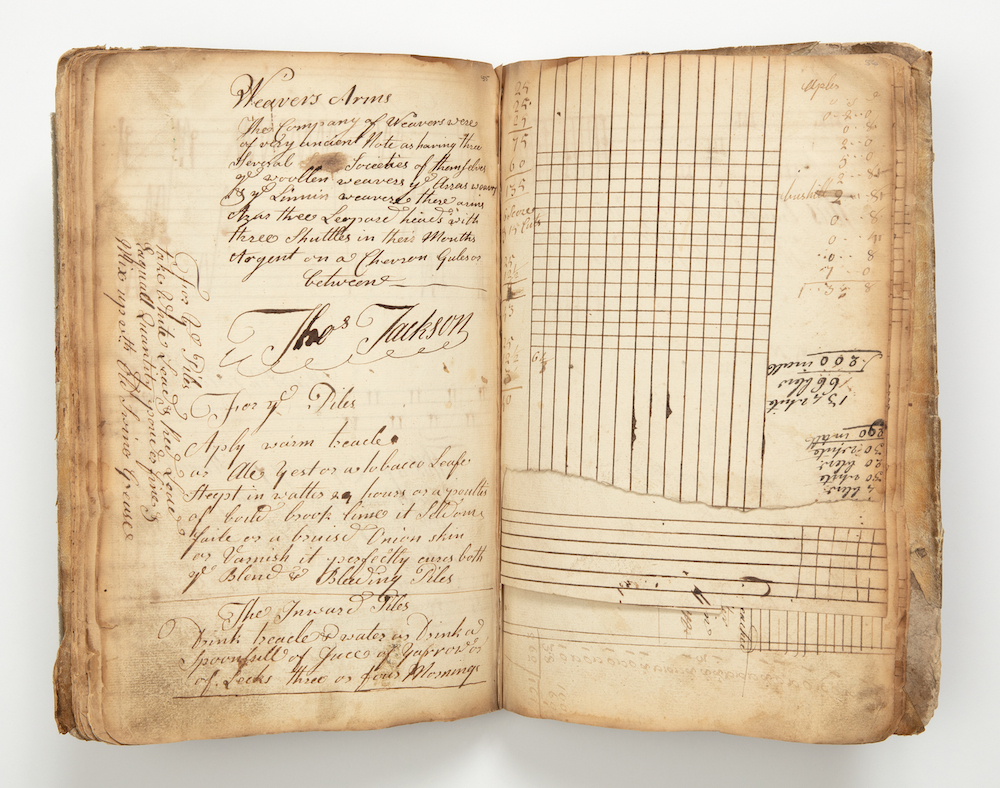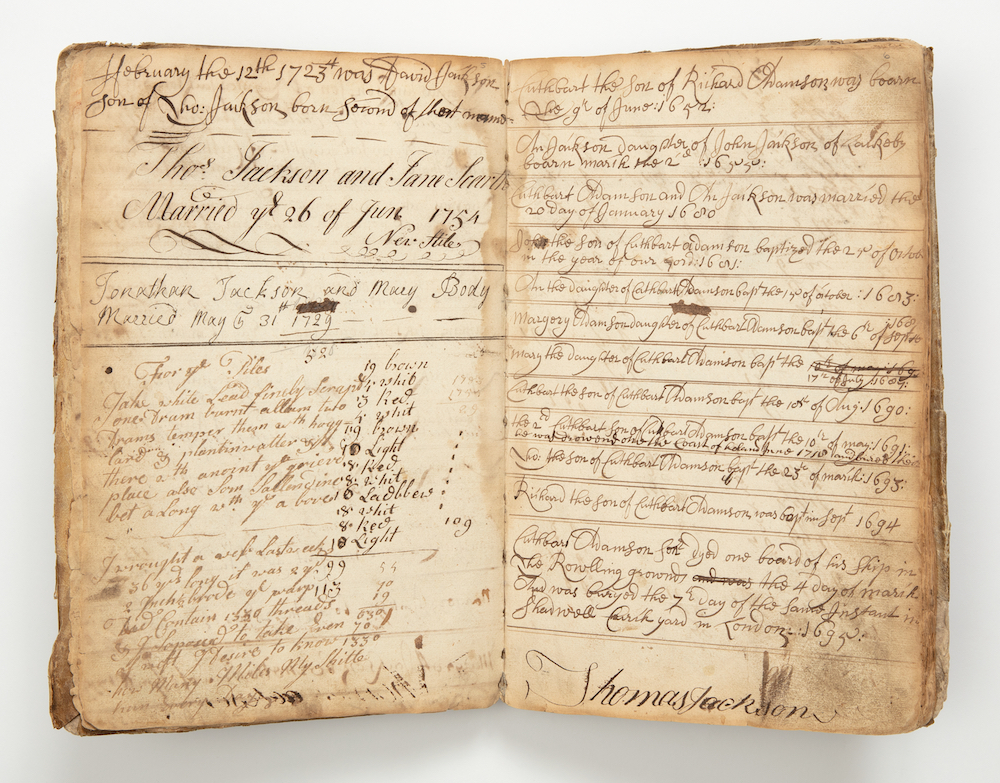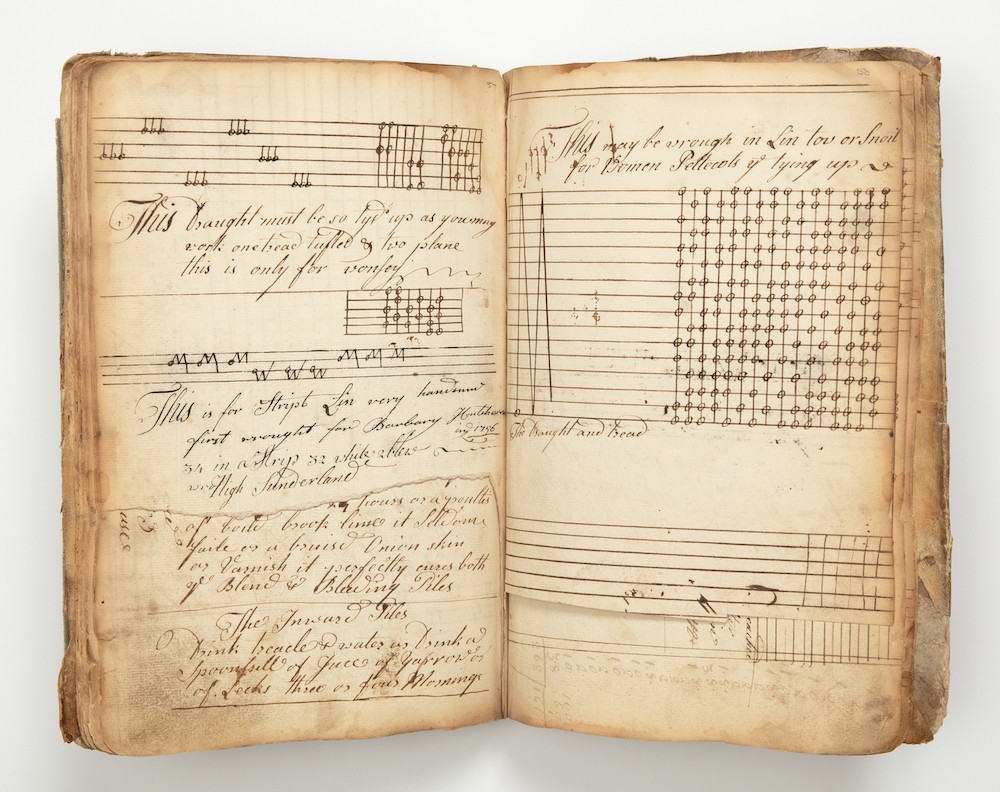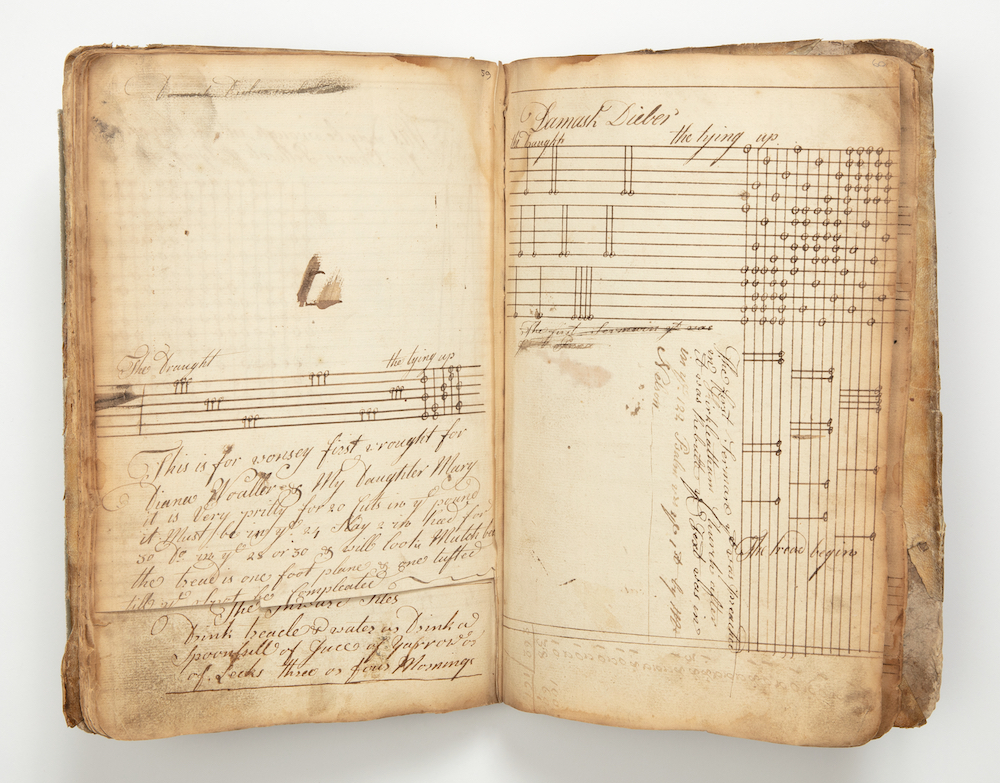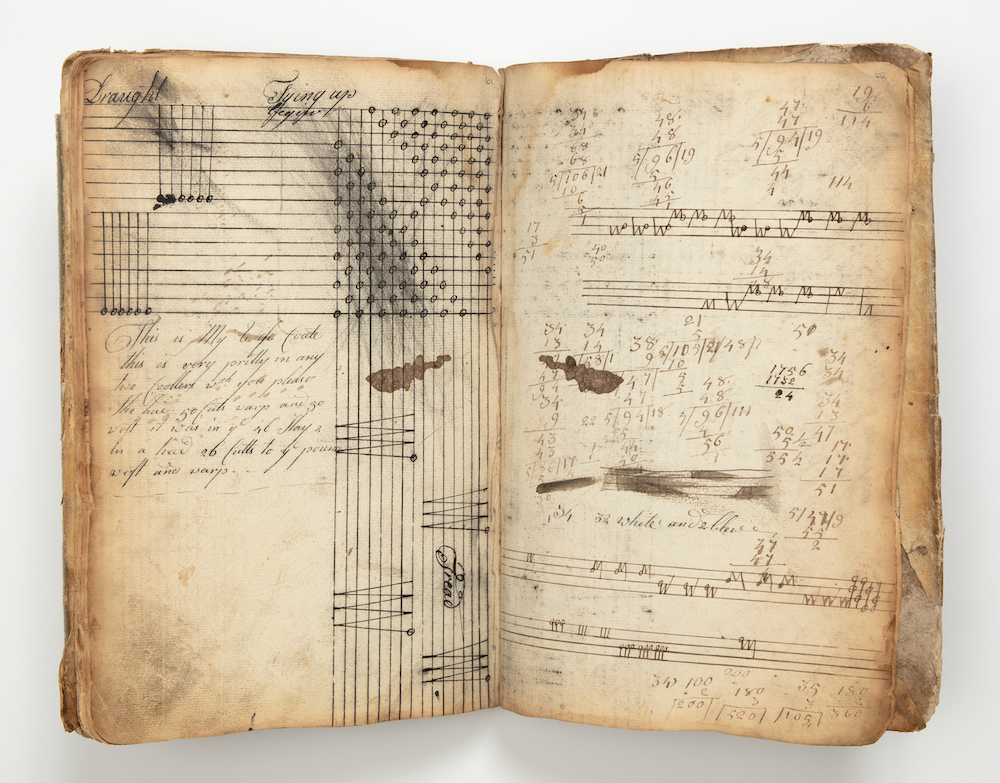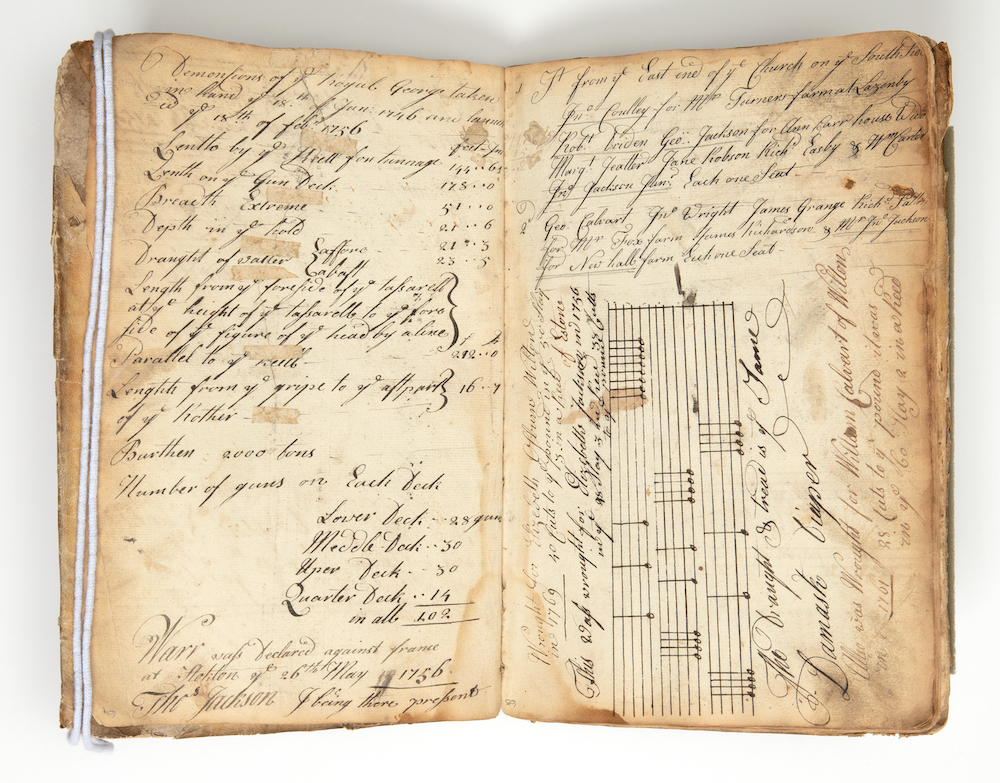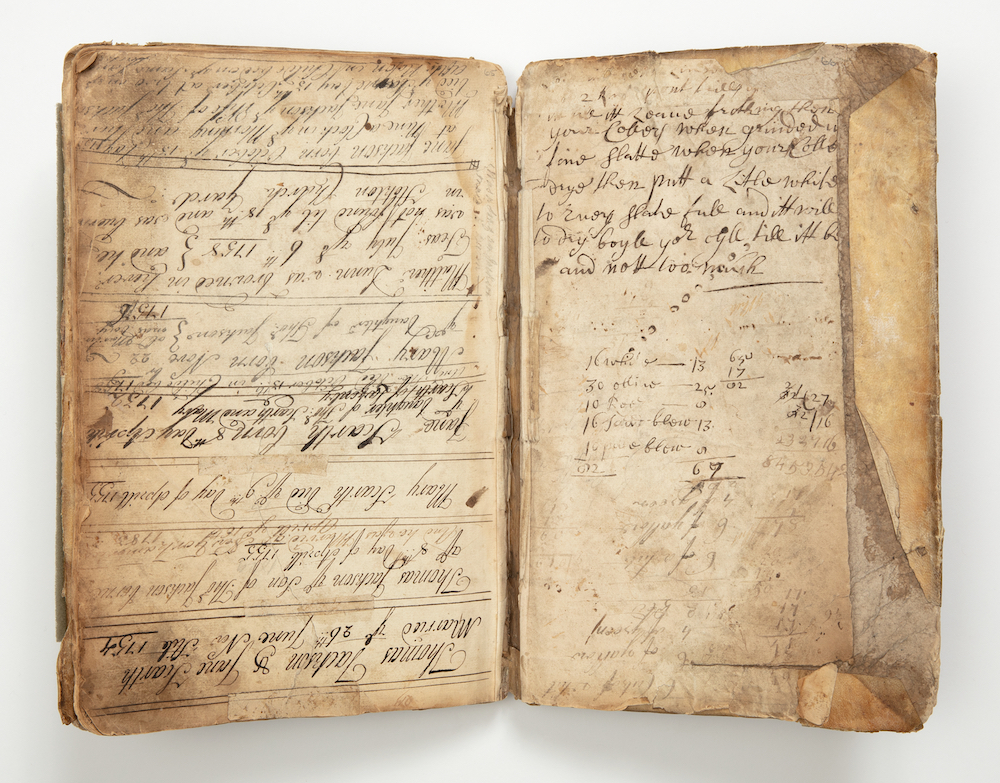(December 2021)
This is an update to my post From Thomas Jackson to Ralph Watson (March 2021), where I describe how I came across a manuscript written between about 1711 and 1769 by four generations of North Yorkshire weavers all called Thomas Jackson, and how that lead me to another manuscript by a weaver called Ralph Watson, also from North Yorkshire. The Thomas Jackson manuscript is in the Cooper Hewitt Museum NYC where it is anonymously listed as Weavers Thesis Book (Accession Number 1958-30-1; Object ID 18423091). It is a remarkable document, giving unique insights into weaving practice in pre-industrial England, and the lives of those involved.
I had written to the museum’s Curator of Textiles in October 2020. There were only two images of the manuscript on the museum’s website, but I hoped they might have more to share. They didn’t, but they did promise to have the manuscript photographed when they returned to normal patterns of work interrupted by the Covid-19 pandemic.
I was delighted when the curator emailed last November apologising for the delay and telling me they had finally been able to photograph the manuscript. The binding was fragile, she wrote, and some of the entries ran deep into the gutter, but they had done their best to capture everything.
In an act of cultural generosity the museum has now put the photographs in the public domain free of copyright restrictions, which is why I am able to include them in this post. High-resolution images of all 66 pages of the manuscript are now available for download from the museum’s website here.
Hats off to the Cooper Hewitt!
